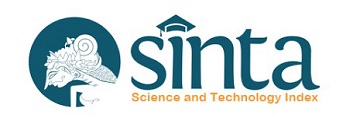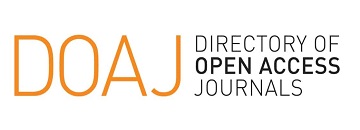Spatial diversity patterns of understory shrub community in Srengseng urban forest, Jakarta

Downloads
Downloads
Al-Mamoori, S.K., Al-Maliki, L.A., & Al-Sulttani, A.H. (2021). Statistical analysis of the best GIS interpolation method for bearing capacity estimation in An-Najaf City, Iraq. Environmental Earth Sciences, 80, 683. https://doi.org/10.1007/s12665-021-09971-2.
Bhat, S., Bhandary, M.J., & Rajanna, L. (2014). Plant diversity in the homegardens of Karwar, Karnataka, India. Biodiversitas, 15(2), 229-235. https://doi.org/10.13057/biodiv/d150216.
Bhunia, G.S., Shit, P.K., & Maiti, R. (2018). Comparison of GIS-based interpolation methods for spatial distribution of soil organic carbon (SOC). Journal of the Saudi Society of Agricultural Sciences, 17(2), 114–126. https://doi.org/10.1016/j.jssas.2016.02.001.
Birch, E., & Wachter, S. (2011). World urbanization: The critical issue of the twenty-first century. In Global Urbanization (pp. 3-23). University of Pennsylvania Press.
Clemants, S.E., & Moore, G. (2003). Patterns of species diversity in eight Northeastern United States Cities. Urban Habitats, 1(1), 4-16.
Downey, P., & Richardson, D. (2016). Alien plant invasions and native plant extinctions: a six-threshold framework. AoB Plants, 8, 1–21. https://doi.org/10.1093/aobpla/plw047.
English, J., Barry, K.E., Wood., E.M., & Wright, A.J. (2022). The effect of urban environments on the diversity of plants in unmanaged grasslands in Los Angeles, United States. Frontiers in Ecology and Evolution, 10, 921472. http://dx.doi.org/10.3389/fevo.2022.921472.
Flores, P., Fernandez, A., Orozco, K., Endino, R., Picardal, J., & Garces, J.J. (2020). Ornamental plant diversity richness and composition in urban parks studies in Metro Cebu Philippines. Environmental and Experimental Biology, 18, 183-192. http://dx.doi.org/10.22364/eeb.18.19.
Foxcroft. L., Pyšek, P., Richardson, D., Genovesi, P., & McFadyen, S. (2017). Plant invasion science in protected areas: progress and priorities. Biological Invasions, 19, 1353–1378. https://doi.org/10.1007/s10530-016-1367-z.
Guiaşu, R., & Tindale, C. (2018). Logical fallacies and invasion biology. Biology & Philosophy, 33, 1–24. https://doi.org/10.1007/s10539-018-9644-0.
Hernandez-Stefanoni, J.L., & Ponce-Hernandez, R. (2006). Mapping the spatial variability of plant diversity in a tropical forest: comparison of spatial interpolation methods. Environmental Monitoring and Assessment, 117, 307–334. https://doi.org/10.1007/s10661-006-0885-z.
Hidayah, A.R., & Roziaty, E. (2022). Keragaman tanaman perdu yang tumbuh di sepanjang jalur pendakian Cemoro Sewu, Magetan. 2022: Prosiding SNPBS (Seminar Nasional Pendidikan Biologi dan Saintek).
Jeschke, J., Bacher, S., Blackburn, T., Dick, J., Essl, F., Evans, T., Gaertner, M., Hulme, P., Kühn, I., Mrugała, A., Pergl, J., Pyšek, P., Rabitsch, W., Ricciardi, A., Richardson, D., Sendek, A., Vilà, M., Winter, M., & Kumschick, S. (2014). Defining the impact of nonnative species. Conservation biology, 28(5), 1188–1194. https://doi.org/10.1111/cobi.12299.
Khan, M.N., Ali, S., Razak, S.A., Zaman, A., Iqbal, M., & Shah, S.N. (2021). Assessment of floristic diversity in the mountain ecosystem of Marghazar Valley, Hindukush Range, Swat, Pakistan. Biodiversitas, 23(2), 1000-1013. https://doi.org/10.13057/biodiv/d230243.
Matius, P., Tjwa, S.J.M., Raharja, M., Sapruddin, Noor, S., & Ruslim, Y. (2018). Plant diversity in traditional fruit gardens (munaans) of Benuaq and Tunjung Dayaks tribes of West Kutai, East Kalimantan, Indonesia. Biodiversitas, 19(4), 1280-1288. https://doi.org/10.13057/biodiv/d190414.
Muhlisin, Iskandar, J., Gunawan, B., & Cahyandito, M.F. (2021). Vegetation diversity and structure of urban parks in Cilegon City, Indonesia, and local residents’ perception of its function. Biodiversitas, 22(7), 2589-2603. https://doi.org/10.13057/biodiv/d220706
Pourbabaei, H., & Haghgooy, T. (2012). Plant species diversity in the ecological species groups in the Kandelat Forest Park, Guilan, North of Iran. Biodiversitas, 13(1), 7-12. https://doi.org/10.13057/biodiv/d130102.
Pyšek. P., Jarošík, V., Hulme, P.E., Pergl, J., Hejda, M., Schaffner, U., & Vilà, M. (2012). A global assessment of invasive plant impacts on resident species, communities and ecosystems: the interaction of impact measures, invading species’ traits and environment. Global Change Biology, 18(5), 1725–1737. https://doi.org/10.1111/j.1365-2486.2011.02636.x.
Sari, L.A.D., Susanto, D., Mukhlison, & Nugroho, P. (2022). The tree diversity of Srengseng Urban Forest in DKI Jakarta. Jurnal Penelitian Kehutanan Wallacea, 11(1), 13-20. https://doi.org/10.18330/jwallacea.2022.vol11iss1pp13-20.
Setianto, A., Setianto, A., Triandini, T., & Triandini, T. (2013). Comparison of kriging and inverse distance weighted (IDW) interpolation methods in lineament extraction and analysis. Journal of Applied Geology, 5(1), 21–29. https://doi.org/10.22146/JAG.7204.
Sihaloho, S.H., & Pariyanto. (2022). Keanekaragaman tumbuhan perdu di Taman Hutan Raya Rajolelo Kabupaten Bengkulu Tengah. Kependidikan, 1(30), 31-37.
Siregar, M., Purnomo, D.W., Siregar, H.M., & Witono, J.R. (2020). Vegetation and ecoregion analysis at Sipirok Botanic Gardens, South Tapanuli, North Sumatra, Indonesia. Biodiversitas. 21(6), 2526-2535. https://doi.org/10.13057/biodiv/d210626.
Theodorou, P., Herbst, S.C., Kahnt, B., Landaverde-Gonzalez, P., Baltz, L.M., Osterman, J., & Paxton, R.J. (2020). Urban fragmentation leads to lower floral diversity, with knock-on impacts on bee biodiversity. Scientific Reports, 10(1), 21756. https://doi.org/10.1038/s41598-020-78736-x.
Tobin, P. (2018). Managing invasive species. 7:F1000 Faculty Rev-1686. https://doi.org/10.12688/f1000research.15414.1.
Wu, Y., & Hu, X. (2020). Study on the urban plant landscape diversity in Longyan. (2012). 2nd International Conference on Remote Sensing, Environment and Transportation Engineering. https://doi.org/10.1109/RSETE.2012.6260756.
Zhang, H., Nizamani, M.M., Padullés, C.J., Guo, L., Zhou, J., & Wang, H. (2022). Spatiotemporal variation of urban plant diversity and above ground biomass in Haikou, China. Biology, 11(12), 1824. https://doi.org/10.3390/biology11121824.








